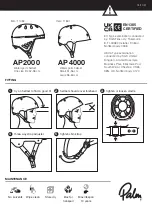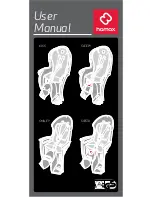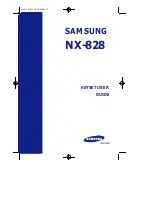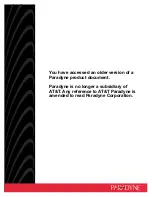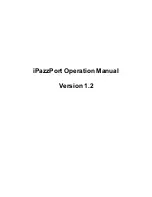
An EyeLink Portable Duo Tutorial: Running an Experiment
©
2016-2017 SR Research Ltd.
57
and the Display PC monitor. The participant display is drawn by the TRACK
application, in response to commands from the EyeLink tracker. The Host PC
screen will also display the raw pupil position as a moving letter O (in yellow for
the right eye and in green for the left eye). The thumbnail images of the eyes
and target as well as the relative positions of the eye(s) in the global camera
view are displayed in the windows at the bottom of the screen. A status bar at
the bottom-right of the display reports the progress of the calibration.
The eye-position cursor will move from location to location during the
calibration as stable fixations are accepted for each calibration target.
Instructing the participant to carefully look at the center of the calibration
target will help improve fixation stability and calibration accuracy. Head
movements during calibration should be discouraged: small head movements
are corrected, but large movements will severely degrade calibration accuracy,
due to distortion of the calibration data pattern and range.
If the cursor jumps continuously and rapidly, or disappears intermittently, the
setup for the eye needs to be corrected – the experimenter should go back to the
setup screen and recheck the camera image as well as the thresholds. The
bottom-right side of the status bar on the Host PC’s display reports the current
eye movement status (e.g., whether the eye is stably fixating or in motion). Eye
position will only be accepted when a stable fixation is detected.
When the eye appears stable, press the “Accept Fixation” button or the ENTER
key or spacebar key to accept the first fixation. The eye tends to come to rest
gradually and to make small vergence movements at the start of the fixation, or
even make a small corrective saccade so as to foveate the center of the target
precisely, so do not respond too quickly. However, do not wait too long before
accepting the fixation, as participants tend to make involuntary saccades that
move the eye away from the target over time. The proper timing is best learned
by watching the gaze cursor during validation (discussed later).
The EyeLink system helps prevent improper triggering by locking out the
ENTER key and spacebar if the eye is moving. Sometimes the ENTER key will
be locked out because of poor camera setup, with the pupil noisy or undetected
in some positions. You can use the
⇑
and
⇓
keys to change the threshold if
required. If this fails, press the ‘ESC’ key to exit back to the Setup screen.
After the first fixation has been accepted, the remaining calibration targets are
displayed in sequence and fixations collected for each. The EyeLink calibration
system presents these targets in a random order, which discourages
participants from anticipating the location of the next target, and saccading
away from the current target before it disappears. However, it is important to
remind the participant to look at each calibration target until the next target
appears.































